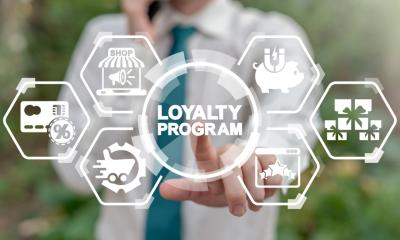
Loyalty programmes include a wide variety of activities designed to increase customer loyalty and boost retention. However, it is important to remember that, like any other tool, they must be tailored to the needs of the specific business. The programme, customer approach, and use of functionalities will differ depending on the specific industry within which the company operates. For example, building loyalty will look different in the retail sector where customers return frequently and spend small amounts to in the luxury goods market where a purchase once a year is considered regular.
How can you understand your industry and create a loyalty programme that increases ROI, retention and engagement?
Why ecommerce loyalty programmes are so effective
Ecommerce loyalty programmes have tremendous potential because of the unique characteristics of the industry. Here's why they work so well in ecommerce:
- Data availability: The vast amount of data available allows better customisation of the programme to meet business needs and the wants and desires of the customers.
- Instant gratification: They provide quick rewards, such as loyalty points or discounts.
- Greater reach: Available 24/7, they reach a wider audience.
- Customer experience: Personalised recommendations and exclusive content.
- Flexibility: Multiple ways to earn and redeem rewards.
- Lower cost: Cheaper to deploy and maintain with no physical infrastructure.
Nine ecommerce loyalty programme mistakes to avoid
When designing and launching a loyalty programme, ecommerce companies can make several mistakes that can impact the success of the programme. What should you avoid?
- Inadequate alignment with business goals: Loyalty programmes should be aligned with the overall goals of the business, such as increasing sales or improving ecommerce customer retention.
- Lack of personalisation and use of customer data: Personalisation is the key to engagement. Programmes should be tailored to customer needs. Research and analytics are critical.
- Complexity and difficulty: Programmes should be simple and intuitive to use. Overly complex mechanics discourage customers.
- Lack of communication and promotion: Customers need to be aware of the programme and its benefits.
- Lack of monitoring and evaluation: The programme's effectiveness should be monitored regularly and modified if necessary.
- Integration: The loyalty programme should be seamlessly integrated with the company's existing technology infrastructure.
- Insufficient updates and refreshing of the programme : Customer preferences change, so programmes need to be updated regularly.
- Poor customer service: Quality customer service encourages participation in the loyalty programme.
- Lack of new and interesting rewards: Customers can get bored with the same rewards. Rewards must be attractive and relevant to motivate participation.
By optimising the loyalty programme and avoiding these mistakes, ecommerce companies can increase customer engagement and loyalty over the long term.
The future of ecommerce loyalty programmes
The future of loyalty programmes in ecommerce includes AI hyper-personalisation, omnichannel integration, sustainability, gamification, and innovative technologies such as blockchain. Companies will increasingly tailor programmes to customer preferences, using artificial intelligence to analyse data and recommend rewards.
Programmes will be integrated across channels, making it easier to collect and redeem rewards. There will also be a growing emphasis on green rewards and unique experiences. Blockchain can bring greater security and transparency to programmes, too.
How to increase loyalty programme ROI
To achieve a high return on investment for loyalty programmes, companies should:
- Set clear goals and metrics: Establish clear goals and metrics, such as customer retention, average order value, and customer lifetime value.
- Offer personalisation: Offer personalised rewards and communications based on customer behaviour and preferences.
- Simplify: Ensure programmes are easy to understand and use, with clear instructions on how to earn and redeem rewards.
- Diversified reward-earning opportunities: Enable customers to earn rewards through purchases, referrals, social media engagement, and reviews.
- Communicate regularly: Communicate regularly with customers about the programme, rewards, and promotions, but avoid over-communication.
- Test and iterate: Regularly test and improve programmes based on data and customer feedback, using A/B testing for promotions and campaigns.
By following these strategies, companies can improve customer engagement and loyalty, and ultimately increase the ROI of their loyalty programmes.
Summary
Loyalty programmes are complex tools that take time to develop and refine. However, these efforts are worthwhile because they can deliver incredible results.
Copyright 2024. Featured post by Mahendra Kumawat.